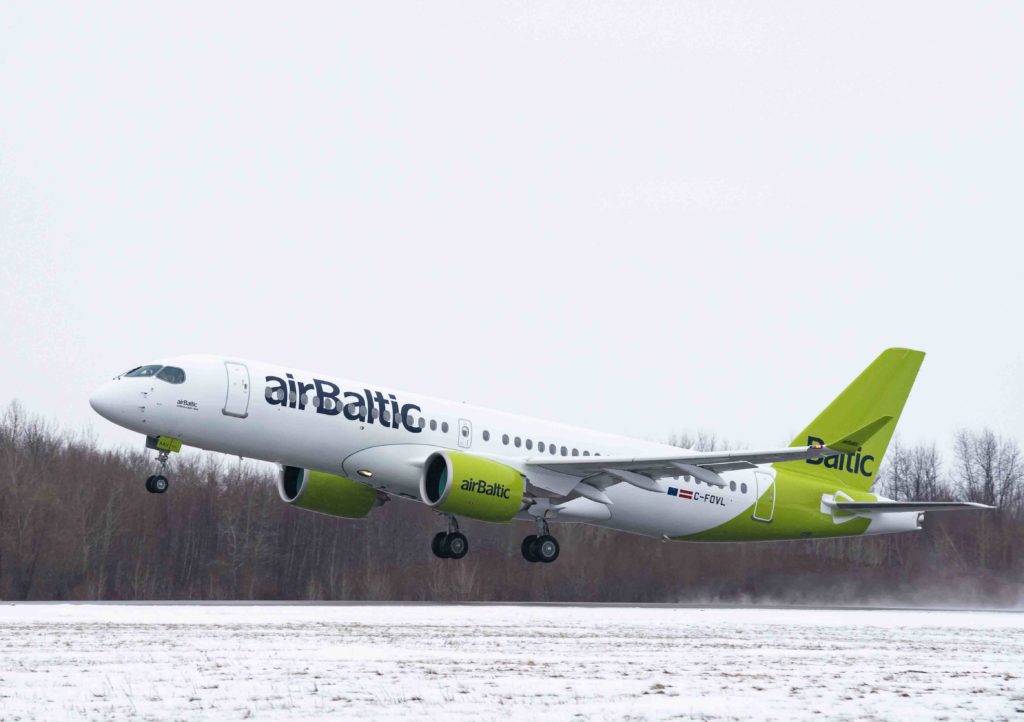Estimated reading time 3 minutes, 3 seconds.
A new Airbus A220-300 operated by airBaltic was diverted to Bordeaux, France, after the crew was forced to shut down the left engine due to a problem. The aircraft was just delivered to the airline in December 2019.

Roughly an hour and a half into the flight the pilots reported the problem, diverted, and were able to land the aircraft safely. The flight – which was carrying 149 passengers – was on its way to Malaga, Spain from the Latvian capital of Riga.
This incident marks the fourth reported issue carriers have had with the A220’s PW1500G engines.
In July 2019, Swiss International Air Lines had to divert an A220-300 flight after a low-pressure compressor disintegrated while climbing through 32,000 feet.
On Sept. 16 of the same year, a similar incident occurred on another Swiss flight just before the aircraft reached 35,000 feet, in which the low-pressure compressor had separated and caused a hole in the compressor case.
On Oct. 15, another Swiss engine failure occurred, prompting the carrier to ground its A220 fleet for engine inspection, though all subsequently passed.
Those three incidents prompted Transport Canada to issue an interim emergency airworthiness directive on Oct. 26, 2019, limiting the power of the engines to 94 per cent while above 29,000 feet, and requiring pilots to disengage the auto throttle while climbing through that altitude, before engaging it as required when stabilized in cruise flight. The directive applies to both A220-100 and A220-300 aircraft models.
“Preliminary investigation results indicate high altitude climbs at higher thrust settings for engines with certain thrust ratings may be a contributor [to the shutdowns],” the regulator said in its statement.
Later that month, Reuters reported that a U.S.-led investigation found that a software update for the aircraft may be causing vibrations of fast-moving parts, in turn causing the failures.
In January 2020, Reuters reported another software update is expected this spring, pending regulatory approval.
“We’re going to have a software drop that comes out later this year that will automate everything and enable us to reduce or eliminate all the inspections that we’re currently having to perform, but that again is pending regulatory approval,” Graham Webb, vice-president of Pratt & Whitney commercial engine programs, told Reuters.
There have been no injuries related to the engine failures thus far.








